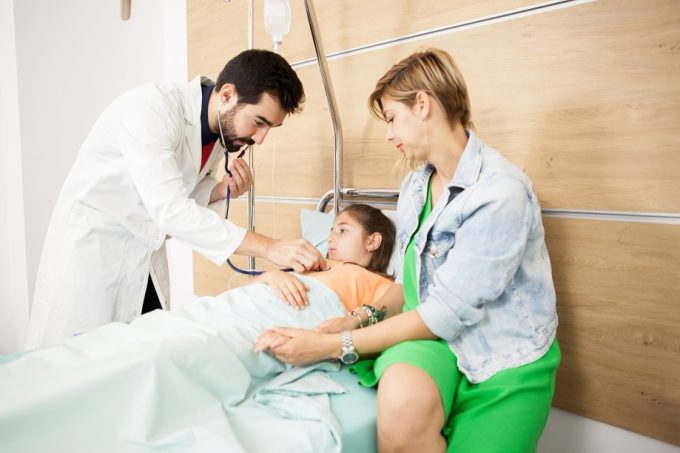Learn what to expect when visiting the Emergency Department. Learn More
-
CALL: +971 4 3454040

- Medical Technology
- August 7, 2025
- 6 MINS READ
Introduction: When Every Second Counts
Emergencies involving children are every parent’s nightmare. In such moments, time moves quickly, emotions run high, and decisions must be made instantly. That’s exactly where the importance of Pediatric Emergency Care comes into play.
Even though we hope to never need it, understanding how Pediatric Emergency Care works—and what steps to take before help arrives—can make a world of difference. Fortunately, with the right knowledge and preparedness, parents can act swiftly, confidently, and calmly in critical situations.
Why Pediatric Emergency Care Is Unique
First and foremost, children are not just small adults. Their bodies respond differently to trauma, infections, and medication. As a result, Pediatric Emergency Care involves highly specialized approaches tailored to their unique physiological and emotional needs.
Moreover, children may struggle to explain what they’re feeling. Therefore, pediatric emergency teams are trained to recognize subtle signs that adults might overlook. These experts rely on both clinical skill and empathy to comfort and treat young patients swiftly and safely.
Common Pediatric Emergencies Every Parent Should Know
Although not every bump or fever is an emergency, certain symptoms do require immediate attention. Thus, parents should familiarize themselves with these red flags to respond appropriately.
Here are the most common conditions requiring Pediatric Emergency Care:
-
High fever with convulsions or unresponsiveness
-
Severe breathing difficulty or choking
-
Persistent vomiting or signs of dehydration
-
Unexplained rashes with fever
-
Severe allergic reactions (swelling, wheezing)
-
Accidental ingestion of toxic substances
-
Major injuries or fractures
Additionally, any loss of consciousness or sudden behavioral change should raise concern. It’s always better to err on the side of caution when it comes to your child’s health.
First Response: What Parents Can Do Before Help Arrives
While waiting for emergency services or arriving at the hospital, certain actions can significantly affect outcomes. However, panic often clouds judgment. Therefore, learning these basic steps ahead of time is crucial.
Steps to take during an emergency:
-
Stay calm: Your child will mirror your emotions. Remaining composed can help them feel safer.
-
Call emergency services immediately: Don’t delay. Clearly describe your child’s symptoms and location.
-
Begin CPR if necessary: If the child isn’t breathing, administer CPR while waiting for help.
-
Avoid giving medication unless advised: Some drugs may worsen the condition.
-
Document any allergies or medications: This information helps doctors respond faster.
Preparing a “go bag” with essential medical documents, allergy lists, and emergency contact numbers can also save precious time.
When to Go to the ER vs. Urgent Care
Understandably, not every health scare warrants a hospital visit. Yet, many parents find it difficult to distinguish between urgent and emergencies. Knowing the difference can help you make faster, more effective choices.
Emergency Room is best for:
-
Head injuries
-
Broken bones with visible deformity
-
Seizures
-
Severe allergic reactions
Urgent Care is better for:
-
Mild fevers
-
Minor sprains or cuts
-
Mild stomach aches
-
Skin rashes without other symptoms
Even though both options provide excellent care, Pediatric Emergency Care at hospitals is often more equipped for critical, life-threatening cases.
How to Emotionally Support Your Child During Emergencies
In emergencies, children experience fear, confusion, and discomfort. As parents, you not only need to make medical decisions but also provide emotional comfort. That’s easier said than done—but not impossible.
Some supportive actions include:
-
Speaking calmly and reassuringly: Use gentle tones to reduce their anxiety.
-
Holding their hand or maintaining eye contact: Small gestures of comfort make a big impact.
-
Distracting them with a toy or story: This keeps their focus away from pain or procedures.
-
Avoiding visible panic: Even if you’re scared, try to present a calm front.
Over time, these comforting gestures help children associate hospitals with healing rather than fear.
Building an Emergency-Ready Home
Preparation goes beyond knowledge. Your home environment should also be ready to handle unexpected health issues. Creating a child-safe, emergency-prepared space can help prevent certain situations and respond more effectively when they occur.
Tips to prepare your home:
-
Install smoke detectors and carbon monoxide alarms.
-
Keep a fully stocked first-aid kit.
-
Store emergency numbers in an easy-to-find place.
-
Childproof cabinets and toxic item storage.
-
Educate older children on calling for help or using emergency tools.
Most importantly, schedule CPR training for yourself and anyone who regularly cares for your child.
Expert Pediatric Emergency Support
Today’s medical centers offer comprehensive emergency services tailored specifically for children. The Medical Specialists Center, for instance, provides compassionate, child-friendly care backed by cutting-edge technology and experienced pediatricians. Their quick-response team ensures your child receives timely treatment with minimum stress.
Furthermore, pediatric specialists are trained to engage with both the child and the parent—providing a holistic, family-centred approach to emergency care.
Conclusion: Knowledge Is the Best Defence
To conclude, while emergencies are unpredictable, your response doesn’t have to be. By staying informed, creating a home emergency plan, and knowing when to act, you give your child the best chance for recovery.
Ultimately, timely access to Pediatric Emergency Care can be lifesaving. Whether it’s recognizing early symptoms or getting help quickly, being prepared changes everything.
If you’re unsure where to start, consulting the best pediatrician in Dubai can offer the guidance you need to develop a proactive emergency plan that suits your child’s health profile.
Frequently Asked Questions (FAQs)
Q1: How do I know if my child’s fever is an emergency?
A: If your child has a fever over 104°F, appears lethargic, has seizures, or shows signs of dehydration (dry lips, no tears, sunken eyes), seek immediate Pediatric Emergency Care.
Q2: What should I include in a pediatric emergency kit?
A: Your kit should have digital thermometers, bandages, antiseptic wipes, age-appropriate pain relievers, a CPR mask, allergy meds, and a printed list of emergency contacts.
Q3: Should I always wait for an ambulance, or can I drive my child myself?
A: If the condition is life-threatening or your child is unresponsive, wait for emergency responders. However, for manageable but urgent issues, it may be faster to drive safely to the nearest facility.



